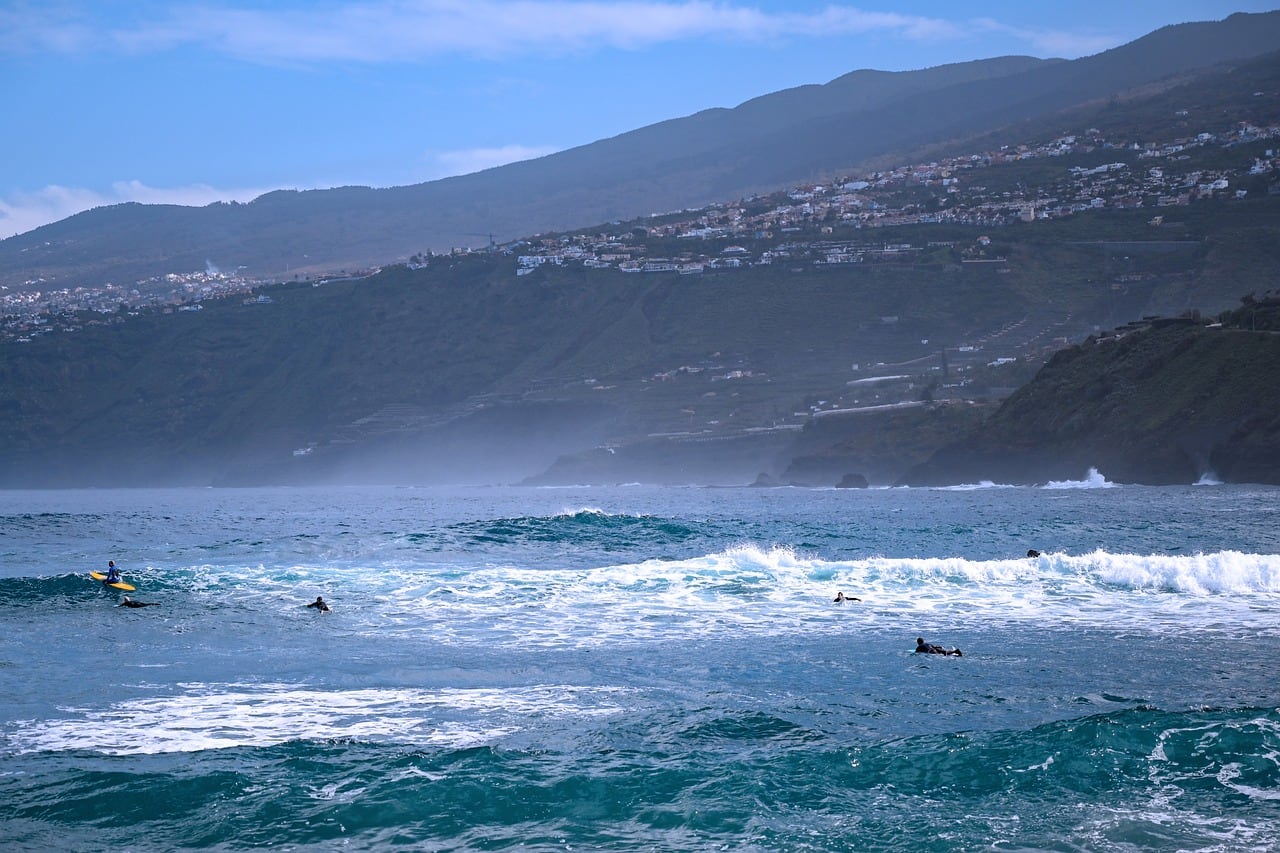Tenerife, often called the “Island of Eternal Spring,” is famous for its consistently pleasant weather throughout the year. Thanks to its geographical location and unique climatic factors, Tenerife offers a mild, moderate climate that appeals to visitors seeking sunshine and outdoor activities in any season. If you’re searching for the weather in Tenerife, here’s everything you need to know, including the key differences between the island’s north and south.
Tenerife Weather: The Role of Trade Winds
Tenerife’s mild climate is shaped by several natural factors, most notably the trade winds, the Canary Current, and the island’s mountainous terrain. The trade winds bring moisture to the northern parts of the island, often creating a “sea of clouds” between 600 and 1,800 meters of altitude, contributing to the lush vegetation of the north. Meanwhile, the Canary Current, a cold ocean current, cools the surrounding waters, balancing the island’s temperature despite its proximity to the Sahara Desert.
This combination of factors ensures that Tenerife enjoys stable temperatures year-round, with averages ranging from 18°C in winter to 25°C in summer. However, the island’s topography and microclimates create notable differences between the weather in the north and south.
Northern Tenerife: Green, Cool, and Cloudy
The northern part of Tenerife, including towns like Puerto de la Cruz and La Orotava, is characterized by its greener, more humid environment. This region receives about 73% of the island’s rainfall, especially in areas like La Orotava’s mountain range, where rainfall peaks between 1,000 and 1,200 meters above sea level.
Although the temperatures in the north are mild, they tend to be slightly cooler than the south. The presence of clouds and higher humidity levels often result in less sunshine compared to the sunnier south. On average, the north receives around 5 to 7 hours of sunshine per day, with temperatures fluctuating between 17°C and 22°C throughout the year.
Notable Weather Features of the North:
- Cooler temperatures, especially in La Laguna, a city known for its refreshing climate.
- Frequent clouds, particularly due to the trade winds and higher altitudes.
- Higher humidity and rainfall, creating lush, green landscapes.
Despite these cloudier and cooler conditions, the north of Tenerife is beloved for its natural beauty, and its mild temperatures make it a popular spot for those seeking a tranquil, green environment.
Southern Tenerife: Sunny, Warm, and Dry
In contrast, the southern part of Tenerife, including popular destinations like Costa Adeje, Playa de las Américas, and Los Cristianos, boasts a warmer and sunnier climate. With less rain and higher average temperatures, the south is the go-to destination for sun-seekers year-round.
The average annual temperature in the south is around 21°C, with summer highs often reaching 25°C or more. Rainfall is scarce in this region, particularly during the summer months when it’s almost nonexistent. However, this dryness and consistent sunshine are what make the southern beaches of Tenerife so popular.
Key Weather Features of the South:
- Warmer temperatures, ranging from 18°C in winter to 25°C in summer.
- More hours of sunshine—up to 10 hours per day in the peak of summer.
- Very low rainfall, particularly from May to September.
While the south tends to be warmer and sunnier, the variation in weather across Tenerife allows for unique experiences. For instance, it’s possible to sunbathe on a beach in Costa Adeje and see snow on Mount Teide, Tenerife’s highest peak, all in the same day.
Unique Weather Phenomena in Tenerife
Tenerife’s diverse weather also leads to fascinating contrasts. For example, in Santa Cruz de Tenerife, the island’s northeastern capital, the climate is classified as subtropical, with an average annual temperature of 21.7°C. However, just a short distance away in La Laguna, a city at a higher altitude, the temperature can be significantly cooler, with a greater likelihood of rain.
Another striking example is Mount Teide. At over 3,700 meters, this volcanic peak is often covered in snow during the winter months, while the coastal regions enjoy mild, sunny weather. This contrast makes Tenerife a truly unique destination, where you can enjoy both winter and summer conditions within a few hours’ drive.
Plan Your Visit to Tenerife: Weather Tips
If you’re planning to visit Tenerife, it’s essential to consider the island’s microclimates:
- For Sunshine: The southern coast offers the best chance for sunny, beach-friendly weather, especially in places like Costa Adeje and Playa de las Américas.
- For Cooler Conditions: The north, particularly areas like La Orotava and La Laguna, provides cooler temperatures and lush landscapes, ideal for hiking and exploring Tenerife’s natural beauty.
- For Adventure: Mount Teide offers a completely different climate, especially in winter, when it’s often snow-capped. Don’t miss the opportunity to experience the stunning contrast between the island’s beaches and its towering volcanic peak.
No matter where you stay, Tenerife’s weather promises pleasant conditions all year round, making it a perfect destination for travelers of all kinds.
After enjoying the ideal weather in Tenerife, be sure to visit Mar de Nubes, our artisan store located in Vilaflor. Our unique crafts are inspired by the island’s stunning landscapes and climate, offering you a piece of Tenerife to take home!



0 comentarios